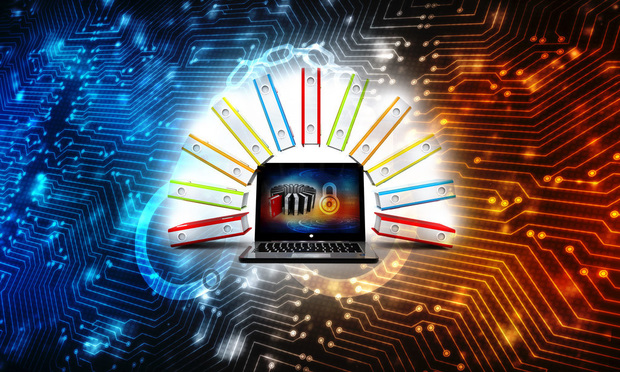Beware: Texts and Wearable Data Must Be Preserved, Too
Attorneys need to be aware of technological advances in terms of preservation of evidence and new avenues for seeking relevant evidence. Spoliation sanctions, including adverse jury instructions, have been issued for the failure to preserve text messages. In addition, data from wearable technology, such as the Apple Watch and the Fitbit, can become relevant and material, while also raising concerns about consumer privacy rights.
February 05, 2018 at 01:41 PM
8 minute read

Attorneys need to be aware of technological advances in terms of preservation of evidence and new avenues for seeking relevant evidence. Spoliation sanctions, including adverse jury instructions, have been issued for the failure to preserve text messages. In addition, data from wearable technology, such as the Apple Watch and the Fitbit, can become relevant and material, while also raising concerns about consumer privacy rights.
Text Messages
It is well established in New York and beyond that once a party reasonably anticipates litigation, it must begin preserving documents and suspend routine document destruction policies. Voom HD Holdings v. EchoStar, 93 A.D. 3d 33, 36 (1st Dep't 2012). Attorneys may not realize that these preservation obligations extend to text messages, an increasingly important source of evidence in civil and criminal law. In the recent “Bridgegate” scandal in New Jersey, prosecutors used text messages between Gov. Chris Christie's aides as proof of a conspiracy to close traffic lanes leading to the George Washington Bridge, ultimately resulting in convictions. While many litigators do not think twice about deleting text messages or discarding old cellphones, these common practices can lead to serious consequences to parties in anticipated or active litigation.
Where Do Texts Go?
When a text message is deleted, it may or may not be recoverable, as a carrier may only retain the content of text messages for a few days. Text messages on iPhones are regularly backed up to iCloud, based on the user's settings and storage capacity, and may be backed up to iTunes when the phone is plugged into the user's computer, which may allow text messages to be recovered even after the carrier stops retaining the content and after the user has deleted the messages. (As a general rule, one should always assume recoverability when deciding whether to send a text message that could later result in negative consequences).
Preserving Text Messages When Phones Are Replaced
In Simons v. Petrarch, 2017 N.Y. Misc. LEXIS 834 (N.Y. Sup. Ct. 2017), the plaintiff accused a former employer of harassment that spanned many years. During her employment, the plaintiff replaced her phone twice, discarding the old phone each time she purchased a new one. When switching phones, the plaintiff lost all of her text messages and was only able to retain screenshots, which she selectively captured and saved as pictures, separate from the original text messages. Defendants objected to the use of these screenshots, contending that the screenshots were incomplete and that they were prevented from examining the full text messages. The plaintiff argued that she had not engaged in spoliation, but only the common practice of replacing and updating her devices. The court disagreed and imposed spoliation sanctions for only saving screenshots and discarding old phones, which prevented defendants from viewing the “complete and original text messages.” The court held that an adverse inference was warranted. The plaintiff was “anticipating litigation” as soon as she began memorializing the alleged harassment and had a continuing duty to preserve her phones and complete text messages, regardless of when she actually brought suit.
Consequences of Routine Text Message Deletion
Similarly, the Albany County Supreme Court in HMS Holdings v. Arendt, 17 N.Y.S.3d 383 (N.Y. Sup Ct. 2015), ordered that an adverse inference instruction would be given to the jury where an old phone was destroyed and texts on the replacement phone were deleted regularly, despite ongoing litigation. During the period in which the plaintiff was seeking the defendant's text messages, she routinely deleted texts to keep the phone “clean and free of building up with messages and texts,” which she argued was “normal behavior.” The court disagreed, deeming the regular deletion of text messages is a “highly unusual practice,” constituting spoliation, because the deleted messages were relevant to the litigation. The court also required the defendant to pay the plaintiff's attorney fees, costs and expenses incurred as a result of this intentional misconduct.
Best Practices
In light of these cases, attorneys should caution their clients to implement cautionary measures when litigation is reasonably anticipated. Clients should retain all of their text messages and old phones, and if available, iCloud and iTunes backups, and be cognizant whether text messages will be transferred when switching to a new device. It also may be wise for litigants to routinely back up their text messages to computers in case a phone is damaged in a way that later makes those messages irretrievable. Finally, in light of Simmons, attorneys and clients alike should be wary of relying on selected portions of a text, such as screenshots, as evidence and instead must preserve and produce text messages in their original, full format.
The Rise of Wearable Technology
Wearable technology, such as the Apple Watch and Fitbit, is quickly becoming as prevalent as smart phones. According to the International Data Corp., more than 26.3 million wearable devices were purchased in 2017, a 7.3 percent increase from 2016. Juniper Research predicts that sales will reach in excess of $68.7 million by 2019. With the release of new and updated wearables every year, wearable technology may become an increasingly primary source for storing personal data. These devices already have the capacity to record and store some of our most personal data, including our location and health data such as our physical activity, heart rate, temperature and exercise patterns.
As these devices become more popular and as their data recording and storing abilities expand, wearable technology will likewise emerge as a source of evidence in civil and criminal cases. The data recorded by these devices have already had groundbreaking implications in courtrooms across the nation, with notable cases addressing issues from discoverability and admissibility at trial to privacy violations and preservation concerns.
Current Legal Uses of Wearable Technology Data
Attorneys have discovered unique ways to introduce wearable technology evidence at trial, particularly in cases in which a party's location or health is at issue. Attorneys have used this data to provide a multitude of defenses and claims, such as the location of a defendant at the time of a crime or whether a plaintiff's physical activity and health substantiate their personal injury claims. This use of evidence, though innovative, has caused uncertainty in courtrooms and may begin to cause increasing evidentiary concerns.
One of the most notable criminal cases in 2017, State v. Dabate, Tolland Superior Court, Connecticut, Docket No: TTD -CR17-0110576-T, involved the use of a Fitbit tracker in a murder case to prove that the victim was still alive for more than an hour after the defendant claimed she was murdered. Similarly, in a 2015 Pennsylvania personal injury action, Commonwealth of Pennsylvania vs. Risley, No. CP-36-CR-0002937-2015, a Fitbit was used to charge a woman with making a false report to law enforcement after she claimed that she was sleeping immediately prior to being raped. Data from the Fitbit contradicted her police report and showed that she was awake and walking around at the time she alleged she was sleeping. Police used this evidence to prove that the woman was most likely staging a fake crime scene.
Potential Preservation Concerns
As courts require that all evidence be preserved once a party reasonably anticipates litigation, users of wearable technology must preserve the information collected by those devices. Like text messages, data from wearable technology is stored on a device that may be synced with a “cloud” service. If that syncing is disrupted or if the backup is deleted, the user may face consequences for failing to preserve evidence if the loss occurs after litigation is anticipated. Issues can develop from even the unintentional deletion or loss of stored data.
Some users may believe their data is private information and not subject to discovery in litigation. Compared with the use of social media, which the Appellate Division, First Department in Forman v. Henkin, 134 AD3d 529 (1st Dep't 2015) has held is discoverable even if posted “privately,” the information collected by wearable devices is more personal as it is typically broadcast only to the user. Moreover, the data stored on these devices, including personal health information and exercise tracking, are not considered information that is typically open to the public for viewing. Given these considerations, a data privacy challenge may have a greater likelihood of success versus a similar challenge for devices such as cellphones.
Few cases discuss the preservation of data from wearable technology, but as the use of these devices becomes more prevalent, counsel should anticipate that courts will likely view these devices with the same spoliation and preservation rules as text messages.
Practice Pointer
As technology continues to develop and become more relevant in litigation, attorneys must advise their clients who reasonably anticipate litigation to protect all forms of data from spoliation.
Joseph Francoeur is a partner in Wilson Elser Moskowitz Edelman & Dicker's New York City office. Michelle Vizzi and Sade A. Forte are associates in the firm's New York City office.
This content has been archived. It is available through our partners, LexisNexis® and Bloomberg Law.
To view this content, please continue to their sites.
Not a Lexis Subscriber?
Subscribe Now
Not a Bloomberg Law Subscriber?
Subscribe Now
NOT FOR REPRINT
© 2025 ALM Global, LLC, All Rights Reserved. Request academic re-use from www.copyright.com. All other uses, submit a request to [email protected]. For more information visit Asset & Logo Licensing.
You Might Like
View All
Pa. Supreme Court to Decide Enforceability of 'Browsewrap' Arbitration Agreements
8 minute read
From a Mediator’s Perspective: Common Mis-steps That Parties Make at Mediation
6 minute readTrending Stories
- 1Uber Files RICO Suit Against Plaintiff-Side Firms Alleging Fraudulent Injury Claims
- 2The Law Firm Disrupted: Scrutinizing the Elephant More Than the Mouse
- 3Inherent Diminished Value Damages Unavailable to 3rd-Party Claimants, Court Says
- 4Pa. Defense Firm Sued by Client Over Ex-Eagles Player's $43.5M Med Mal Win
- 5Losses Mount at Morris Manning, but Departing Ex-Chair Stays Bullish About His Old Firm's Future
Who Got The Work
J. Brugh Lower of Gibbons has entered an appearance for industrial equipment supplier Devco Corporation in a pending trademark infringement lawsuit. The suit, accusing the defendant of selling knock-off Graco products, was filed Dec. 18 in New Jersey District Court by Rivkin Radler on behalf of Graco Inc. and Graco Minnesota. The case, assigned to U.S. District Judge Zahid N. Quraishi, is 3:24-cv-11294, Graco Inc. et al v. Devco Corporation.
Who Got The Work
Rebecca Maller-Stein and Kent A. Yalowitz of Arnold & Porter Kaye Scholer have entered their appearances for Hanaco Venture Capital and its executives, Lior Prosor and David Frankel, in a pending securities lawsuit. The action, filed on Dec. 24 in New York Southern District Court by Zell, Aron & Co. on behalf of Goldeneye Advisors, accuses the defendants of negligently and fraudulently managing the plaintiff's $1 million investment. The case, assigned to U.S. District Judge Vernon S. Broderick, is 1:24-cv-09918, Goldeneye Advisors, LLC v. Hanaco Venture Capital, Ltd. et al.
Who Got The Work
Attorneys from A&O Shearman has stepped in as defense counsel for Toronto-Dominion Bank and other defendants in a pending securities class action. The suit, filed Dec. 11 in New York Southern District Court by Bleichmar Fonti & Auld, accuses the defendants of concealing the bank's 'pervasive' deficiencies in regards to its compliance with the Bank Secrecy Act and the quality of its anti-money laundering controls. The case, assigned to U.S. District Judge Arun Subramanian, is 1:24-cv-09445, Gonzalez v. The Toronto-Dominion Bank et al.
Who Got The Work
Crown Castle International, a Pennsylvania company providing shared communications infrastructure, has turned to Luke D. Wolf of Gordon Rees Scully Mansukhani to fend off a pending breach-of-contract lawsuit. The court action, filed Nov. 25 in Michigan Eastern District Court by Hooper Hathaway PC on behalf of The Town Residences LLC, accuses Crown Castle of failing to transfer approximately $30,000 in utility payments from T-Mobile in breach of a roof-top lease and assignment agreement. The case, assigned to U.S. District Judge Susan K. Declercq, is 2:24-cv-13131, The Town Residences LLC v. T-Mobile US, Inc. et al.
Who Got The Work
Wilfred P. Coronato and Daniel M. Schwartz of McCarter & English have stepped in as defense counsel to Electrolux Home Products Inc. in a pending product liability lawsuit. The court action, filed Nov. 26 in New York Eastern District Court by Poulos Lopiccolo PC and Nagel Rice LLP on behalf of David Stern, alleges that the defendant's refrigerators’ drawers and shelving repeatedly break and fall apart within months after purchase. The case, assigned to U.S. District Judge Joan M. Azrack, is 2:24-cv-08204, Stern v. Electrolux Home Products, Inc.
Featured Firms
Law Offices of Gary Martin Hays & Associates, P.C.
(470) 294-1674
Law Offices of Mark E. Salomone
(857) 444-6468
Smith & Hassler
(713) 739-1250







